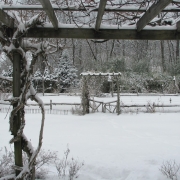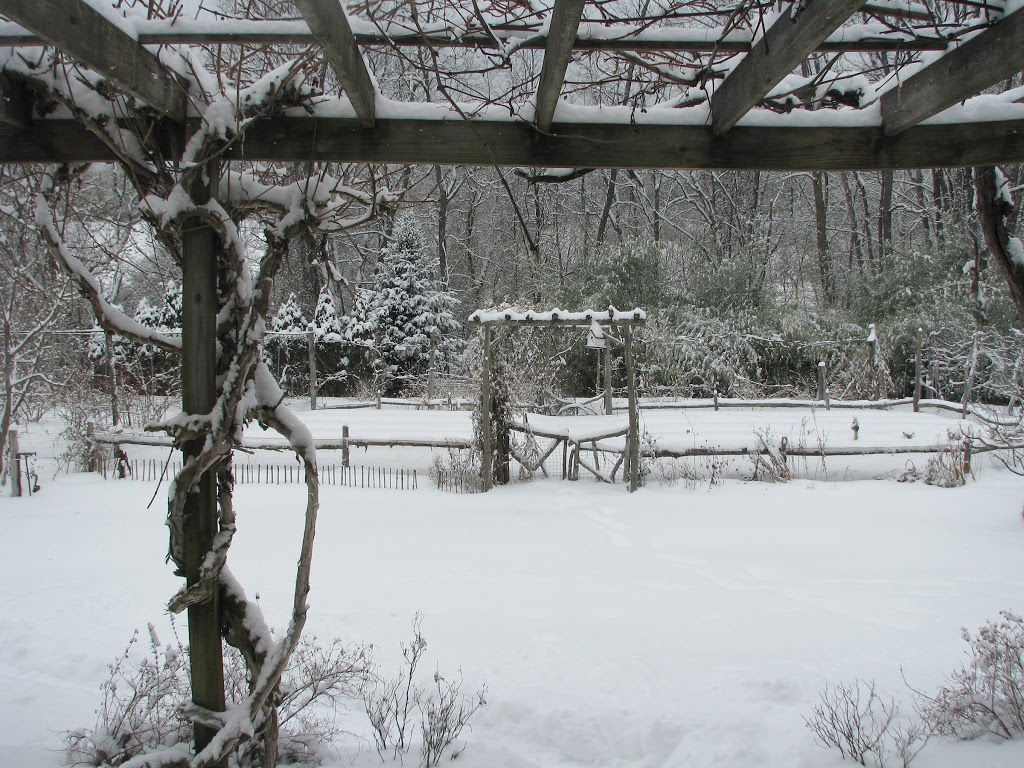Brrrr, Good Thing It’s Cold.
The sound and feel of crunchy snow underfoot are reminiscent of cold, snowy winters past. Pity poor trees and shrubs; they can’t stomp their limbs or do jumping jacks to get their sap moving and warm up. The sap has no warmth anyway. Still, except for garden and landscape plants pushed to their cold limits, plants do survive bitter cold.
Peonies, delphiniums, and other herbaceous perennials opt for the easiest survival route, letting their tops die off each winter. Anticipating frigid weather way back in late summer, they pumped nutrients in their stems and leaves down to their roots. What’s left of these plants spend a mild winter underground, especially mild beneath a blanket of snow.
Low growing plants whose stems and leaves stay alive in winter have it almost as good as those survived only by their roots. Near the ground, these plants aren’t exposed to the full brunt of winter winds or cold. And when Mother Nature decides to throw down a powdery, white insulating blanket, all the better. Just in case Mother Nature wasn’t going to cooperate with that blanket, I took it upon myself to throw a blanket of pine needles over my strawberry bed to protect them from cold.
Think about it: Water freezes at thirty-two degrees Fahrenheit — not a particularly cold temperature for a winter night — and plants contain an abundance of water. Water is unique among liquids in that it expands when it freezes, so you can just imagine the havoc that would be wreaked as water-filled plant cells froze and burst. Yet plants that hold their heads high and upright all winter do weather the cold.
One tack is to shed those parts most likely to freeze — leaves. That still leaves water-filled cells of trunks and stems having to stand up and face the cold.
Water doesn’t necessarily freeze as soon as temperatures drop below thirty-two degrees Fahrenheit. To freeze, water molecules need something to group around to form ice crystals, a so-called nucleating agent. Without a nucleating agent, water “supercools,” remaining liquid down to about minus forty degrees, at which point ice forms whether or not a nucleating agent is present. All sorts of things can serve as nucleating agents — bacteria, for instance — so plants may not be protected all the way down to minus forty degrees by having their water supercool, but just a bit of supercooling may be all a plant needs to survive winter cold.
Plants have another trick for dealing with cold, one that is effective well below that minimum supercooling temperature. That trick is to gradually move water out of their cells into the spaces between the cells, where the water can freeze without causing damage. Cell membranes are permeable to water, so as temperatures drop ice crystals that form outside plant cells grow with the water they draw out of the cells. As temperatures drop, then, the plant is now threatened more by dehydration than by freezing.
One other thing at work for the plants here is something called freezing point depression, which is why antifreeze keeps the water in your car radiator from freezing and salt melts ice. Basically, whenever you dissolve something in water, you lower the resulting solution’s freezing point, more so the more that’s dissolved. Plant cells are not pure water, and as the liquid in those cells losing water becomes more and more concentrated in sugars and minerals, their freezing point keeps falling. Plants toughest to cold are those that are best at reabsorbing the water outside their cells when temperatures warm.
————————————————
What’s a gardener to do in cold weather? Ski, of course. Which this year is going to greatly improve my gardening.
Skiing brought me to Vermont. Vermont, besides skiing, brought me to the Gardener’s Supply (www.gardeners.com) retail store in Burlington, which brought me to their “Push Button Multi-Watering
Wand.” I contend that paying attention to and ministering to plants’ water needs goes a long way to good gardening. I’m expecting this watering wand, with options for everything from misting water, to gurgling it to making a soft shower, and more, to keep my plants even happier than they’ve been. I also like the sturdy, metal construction and, especially for watering hanging baskets, the articulating head with extensible reach.
——————————
This year’s longer and colder reach of Old Man Winter’s fingers could help with pest problems. Over the past few years, associated but not necessarily the result of warmer winters, the likes Japanese beetle, marmorated stink bug, spotted wing drosophila, late blight of tomatoes and potatoes, and black rot of apples have become bigger problems.
Perhaps winter cold will knock out these problems or set them back. For those that hitchhike north from warmer, more southerly locations, cold might drive those problems further south to make travel here more difficult or, at least, take longer. We’ll see.




